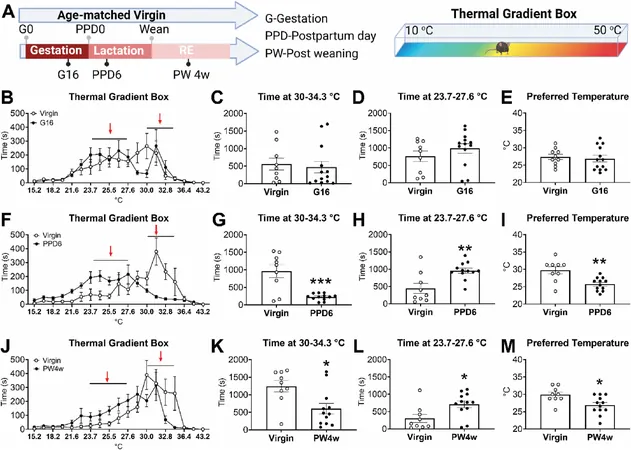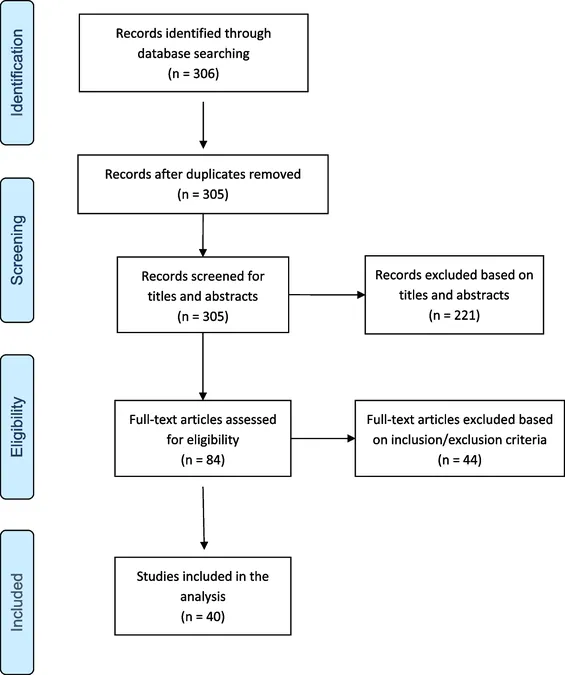
Shocking Changes in New Mothers: Why Postpartum Mice Prefer Cooler Temperatures
2025-03-25
Author: Daniel
In a groundbreaking study, researchers from Baylor College of Medicine have unveiled intriguing insights into postpartum female mice, revealing a shift in their habitat preferences that could provide vital clues about metabolic adaptations during motherhood. Published in the journal Molecular Metabolism, the findings emphasize significant brain changes that affect temperature regulation in new moms.
Pregnancy and lactation cause substantial metabolic shifts to nurture the developing fetus and facilitate breastfeeding. However, one area that has remained largely unexplored is how body temperature preferences transform during the postpartum phase. This research sheds light on this poorly understood aspect of motherhood.
Dr. Chunmei Wang, a lead researcher and assistant professor at Baylor, explained the typical transitions in body temperature experienced during pregnancy: "In both humans and mice, body temperature rises during early pregnancy, dips back to normal in late pregnancy, and then spikes again during lactation." But what happens to those preferences once the baby is born?
The team discovered that postpartum female mice develop a marked preference for cooler environments starting from late pregnancy, a trend that endures for weeks after the weaning period. Fascinatingly, these mice showed a decrease in body temperature and an aversion to the warmer, typical environments they previously favored.
To delve deeper into the neurological aspects governing these changes, researchers focused on the preoptic area (POA) of the brain, a critical region responsible for sensing and regulating body temperature. Here, they discovered a drastic decline in a specific type of neuron known as estrogen receptor alpha (ERα)-expressing neurons.
The significance of this finding cannot be overstated. Further experiments indicated that virgin female mice lacking these ERαPOA neurons also exhibited a preference for cooler environments, mirroring the postpartum response. This suggests a direct link between these neurons and the altered temperature preferences observed in new mothers.
Moreover, the study revealed that these ERαPOA neurons possess varied sensitivities to temperature changes. One cluster directly reacts to warmth, while another is responsive to cooler temperatures. Remarkably, postpartum females exhibited a diminished sensitivity to heat and an enhanced ability to detect cold—a striking contrast to non-mother mice.
These revelations could have crucial implications for understanding postpartum physiology in humans, opening avenues for further research into how similar mechanisms might govern temperature regulation and preferences in new mothers. Could these findings eventually lead to better support for mothers experiencing postpartum adjustments? As scientists continue to explore these connections, one thing is clear: the journey of motherhood extends far beyond the nurturing of a new life—it also reshapes biological preferences in surprising ways!



 Brasil (PT)
Brasil (PT)
 Canada (EN)
Canada (EN)
 Chile (ES)
Chile (ES)
 Česko (CS)
Česko (CS)
 대한민국 (KO)
대한민국 (KO)
 España (ES)
España (ES)
 France (FR)
France (FR)
 Hong Kong (EN)
Hong Kong (EN)
 Italia (IT)
Italia (IT)
 日本 (JA)
日本 (JA)
 Magyarország (HU)
Magyarország (HU)
 Norge (NO)
Norge (NO)
 Polska (PL)
Polska (PL)
 Schweiz (DE)
Schweiz (DE)
 Singapore (EN)
Singapore (EN)
 Sverige (SV)
Sverige (SV)
 Suomi (FI)
Suomi (FI)
 Türkiye (TR)
Türkiye (TR)
 الإمارات العربية المتحدة (AR)
الإمارات العربية المتحدة (AR)